I was lucky enough to get off work early the other day and thought I would head out toward Battle Creek Wildlife Area and try to get some better photos of the Harlan’s Red-tailed Hawk I’ve seen on Dersch Road. This area we call “Millville Plains” is mostly grassland and oak savannah and is an excellent place to see raptors. Red-tailed Hawks and American Kestrels are a sure thing and Ferruginous Hawk, Merlin and Prairie Falcon can be found by the experienced observer.
Driving on these less traveled country roads is always relaxing and unhurried. Heading toward the last know location of my quarry, I noticed a medium sized songbird fly-catching from the fence along side the roadway. It was a Say’s Pheobe (Sayornis saya).
As I was photographing the phoebe, moving from one perch to another almost continuously, a flash of blue caught my eye. A Western Bluebird I assumed, but as I turned away from the phoebe to confirm my sighting, I was delighted to be looking at a male Mountain Bluebird (Sailia currucoides). A bird I seldom see in the valley. What a treat he was.
Heading eastward again on my quest, I came to the tree where the Harlan’s Red-tail was most likely to be seen, but not today. It is possible that this migrant has moved on so I headed the short distance to a local rural road, Leopard Drive, where we always find a variety of raptors as well as Horned Larks and occasionally Lapland Longspurs.
Say’s Phoebes and Horned Larks were everywhere but a Northern Harrier caught my eye. I love watching their seemingly lazy, ground-hugging buoyant flight but they never seem to want to be photographed and today was no exception.
I had been seeing huge colonies of Turkey Vultures (Cathartes aura) everywhere lately and at the top of Leopard Drive, on the flat grassland that stretches for miles, there were many. There was also a group of Bald Eagles (Haliaeetus leucocephalus) soaring nearby, including this juvenile, who seemed to be enjoying aerial maneuvers with its sibling.
My eye followed this young eagle as it circled its way to the ground, just over a small rise and out of sight. I headed farther down the road to where I could spot the youngster and that’s where I found the treasure. There was a large bovine, laying on its side in a small creek bed. It was a meal fit for a king and several scavengers were wasting no time taking their share of the spoils.
I watched the interaction of these birds for quite awhile. The Turkey Vultures coming and going, the American Crows (Corvus brachyrhynchos) working their way around the big birds, to spots on the carcass where they hoped not to be interrupted, and the Bald Eagles, having only to flex their wings to clear space for their dining area.
httpv://www.youtube.com/watch?v=7cFKUm5lPpM
On the way out Leopard Road, I stopped to take a closer look at the Horned Larks (Eremophila alpestris). This one was all puffed up after preening.
Onward, down Parkville Road, toward Battle Creek, I stopped for a few minutes at a bridge where the Northern Rough-winged Swallows (Stelgidopteryx serripennis) come to breed in the spring and yes, they had arrived. Occasionally they would sit on the bridge railings and pose.
While I was sitting there, I heard the unmistakable call of a Belted Kingfisher (Ceryle alcyon). I looked over to see this beautiful male hunting from a perch directly across the bridge from me. He wasn’t calling in this photo, just yawning I guess.
When I finally made it to Battle Creek, I didn’t bother going to the wildlife area proper, I hiked up a trail on the south side of the creek, still part of the wildlife area, but an area where very few folks go. It wasn’t all that birdy but I did get to witness a pair of Red-tailed Hawks (Buteo jamaicensis) performing what appeared to be a courtship or bonding display. As they were flying in huge circles, one of the pair extended its legs like landing gears from a plane,
then pulled up behind the other very closely
This time they passed each other and just kept on playing but sometimes they can lock talons and tumble toward the ground.
I’ve never witnessed the locked talons first hand but I hope to see it as it happens some day.
As I was getting back to my car, I saw a flutter of sparrows escape from a berry bush and this Black Phoebe (Sayornis nigricans) flew to a nearby treetop and flicked its tail.
Even though I didn’t get to see my Harlan’s Red-tailed Hawk, the overall day of birding was a royal treat!


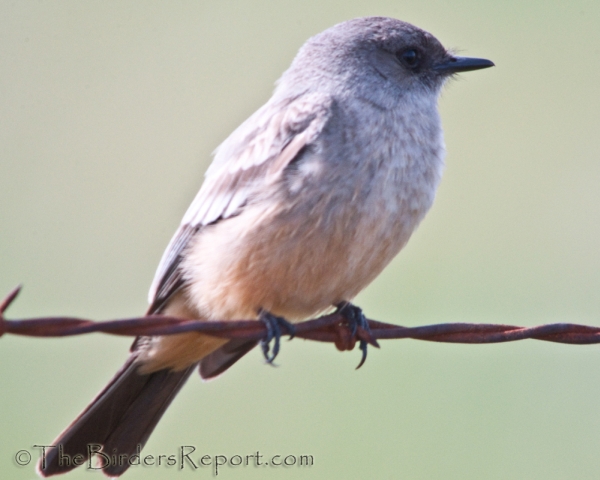
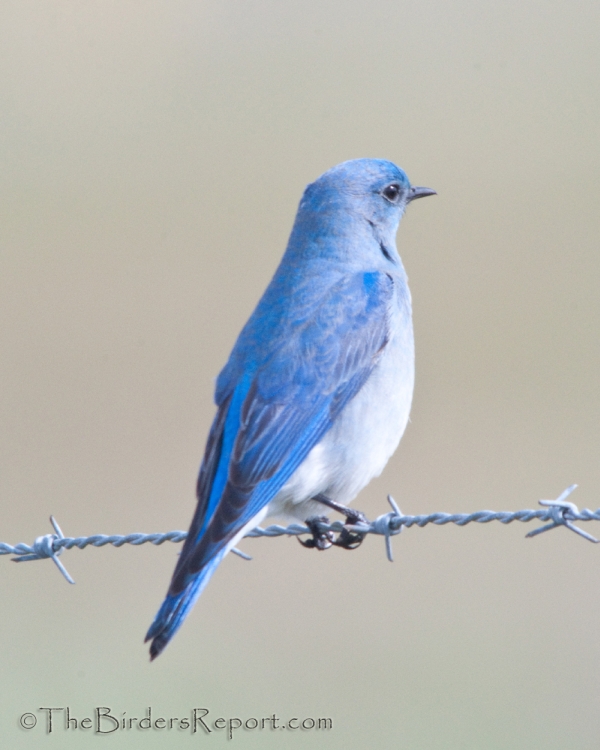
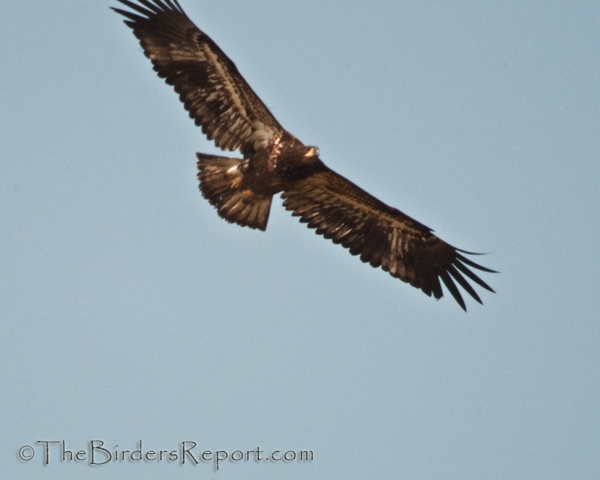
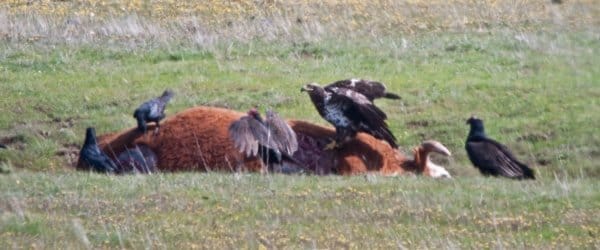
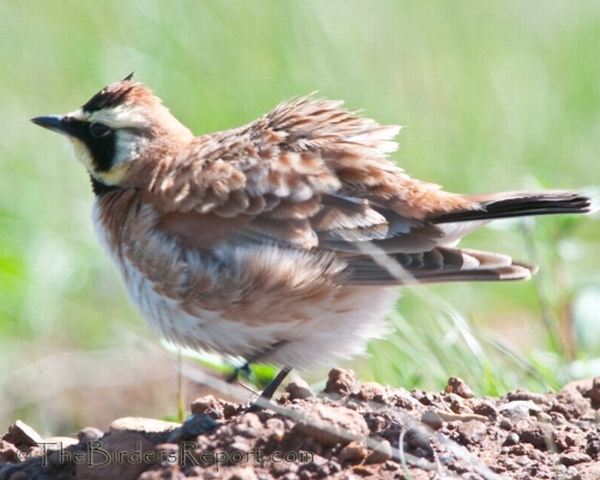
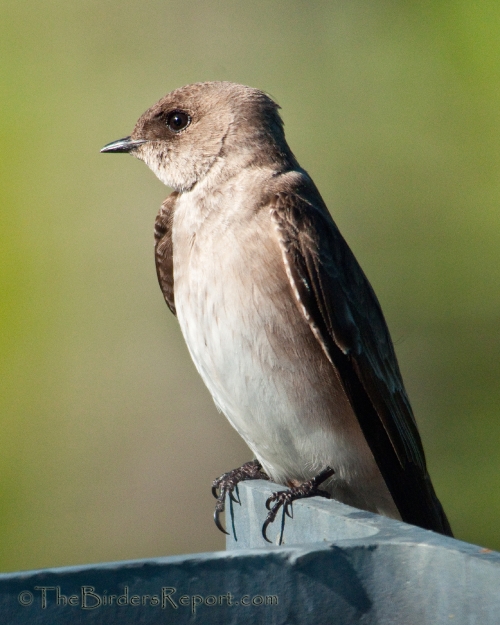
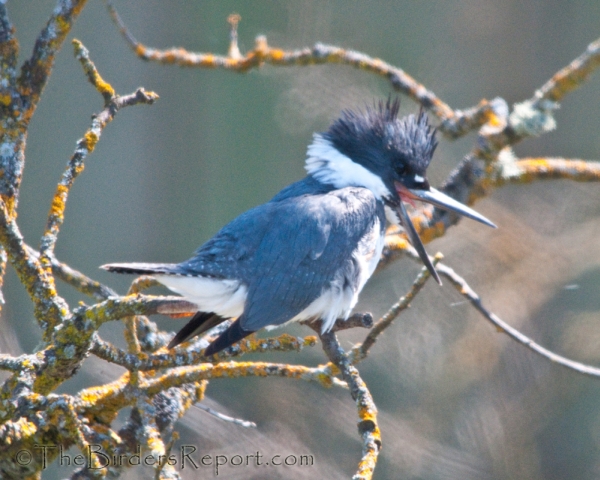
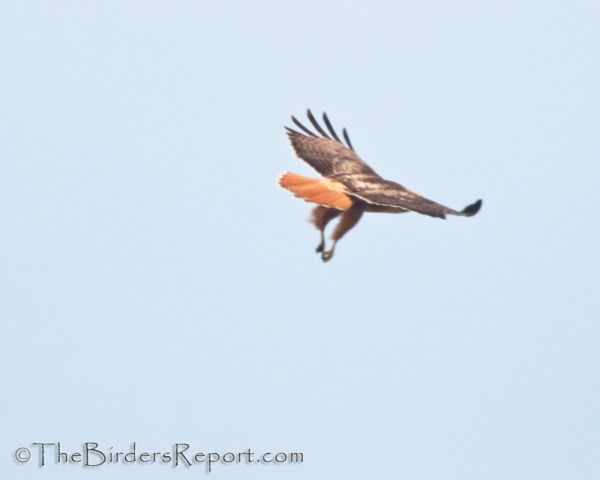
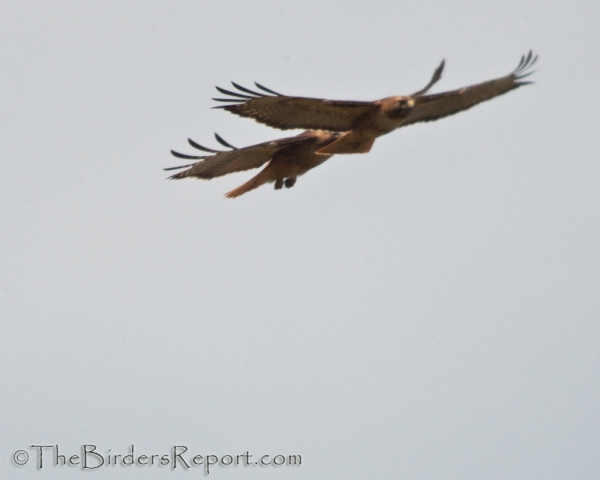
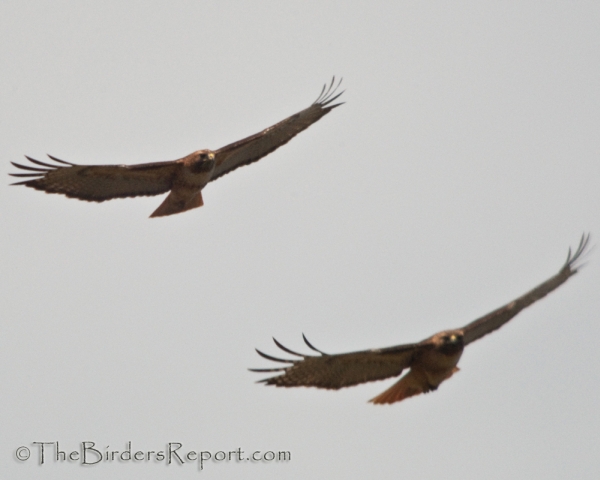
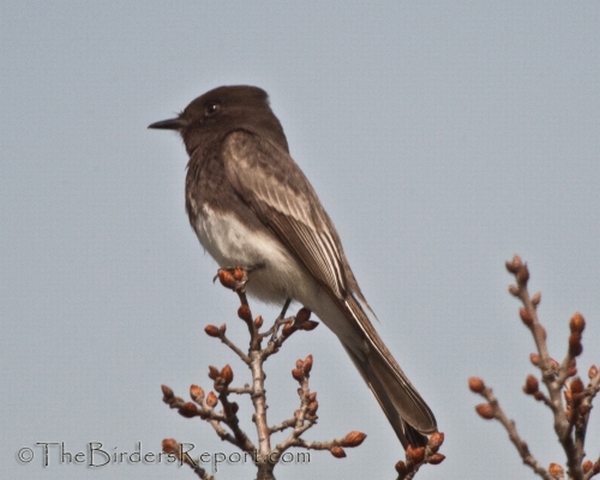











Excellent photos, the bluebird is so beautiful, but my favorite of your photos is the Horned Lark
Larry — that is an amazing day of birding. Just marvelous; thank you so much for sharing your wonderful day and beautiful photos.
What a great outing with all those great birds and nice photos! Thanks Larry.
Wow, where to start? Super photos as always, but the Say’s Phoebe really caught my eye because I’m a sucker for Tyrannids and the Rough-winged Swallow is so up close and personal it’s like you must have been a foot away when you snapped that one. Great great great stuff Larry!
@Jan I was thrilled to see the Mountain Bluebird, they are such a beautiful species. I was lucky to catch the Horned Lark in that shake birds do right after they preen
@Sally thank you. I had a wonderful day!
@Robert, thanks. I had a great day!
@Chantelle thank you. The swallow allowed me to creep closer and closer until another vehicle came by and it took off. Birding out in the country where there is nobody on the roadways is a big advantage
Hi Larry! Nice shots, love all of those places you mentioned, great birding spots!
Just wondering about red-tailed hawks locking talons and tumbling to the ground? I wasn’t aware that they do that? I thought only bald eagles did that courtship display?
I had the chance to witness Red-tailed Hawks locking talons at Middle Creek Wildlife Management Area in southeastern Pennsylvania in February during Snow Geese migration. It was an amazing sight that I have not seen before or after that day. Also, great shots of the bird species in this post! Thanks for sharing!
Enjoyed reading your report, Larry. The Rough-winged Swallow is absolutely beautiful as shown and better yet enlarged to true size. The fine detail in the plumage is terrific!
Gorgeous post, Larry!
What a treat to see the Bluebird and all the other fine specimen!
And lucky birdies to get a free meal 😀
@Terri yes Red-tailed Hawks do lock talons. I’m not sure what other raptors perform this courting behavior but I would love to see it in person some day
@Tim you are a lucky fellow!
@Hilke thank you very much. That swallow was very cooperative 😉
@Nicole thanks. I always feel lucky when I see a Mountain Bluebird!